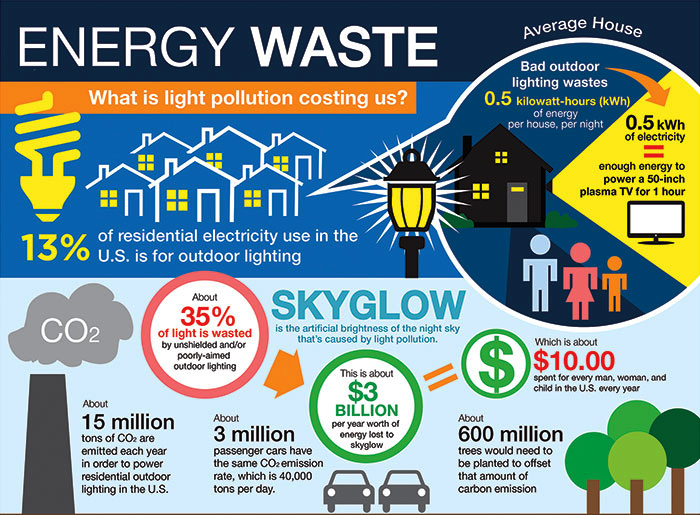Biodiversity & Environment
Skyglow: Light Pollution
- 03 Aug 2021
- 4 min read
Why in News
A recent study has shown that the Skyglow forces dung beetles in the city to abandon the Milky Way as their compass, they rely instead on earthbound artificial lights as beacons.
Key Points
- About Skyglow:
- The Skyglow, is an omnipresent sheet of light across the night sky in and around cities that can block all but the very brightest stars from view.
- The brightening of the night sky over inhabited areas because of streetlights, security floodlights and outdoor ornamental lights cause the Skyglow.
- This light floods directly into the eyes of the Nocturnal (active at night) and also into the skies and misleads their path.
- 'Skyglow' is one of the components of light pollution.
- Light Pollution:
- About:
- The inappropriate or excessive use of artificial light – known as Light Pollution (LP) – can have serious environmental consequences for humans, wildlife, and our climate.
- Components of light pollution include:
- Glare: Excessive brightness that causes visual discomfort
- Skyglow: Brightening of the night sky over inhabited areas
- Light trespass: Light falling where it is not intended or needed
- Clutter: Bright, confusing and excessive groupings of light sources.
- Causes:
- LP is a side effect of industrial civilization.
- Its sources include building exterior and interior lighting, advertising, commercial properties, offices, factories, streetlights, and illuminated sporting venues.
- Effects:
- Wastes Energy and Money:
- Lighting that emits too much light or shines when and where it’s not needed is wasteful. Wasting energy has huge economic and environmental consequences.
- Disrupting the ecosystem and wildlife:
- Plants and animals depend on Earth’s daily cycle of light and dark rhythm to govern life-sustaining behaviors such as reproduction, nourishment, sleep and protection from predators.
- Scientific evidence suggests that artificial light at night has negative and deadly effects on many creatures including amphibians, birds, mammals, insects and plants.
- Ex: A study has now shown how nocturnal dung beetles are forced to search for cues in their immediate surroundings when they can no longer navigate using natural light from the night sky.
- Harming human health:
- Like most life on Earth, humans adhere to a Circadian Rhythm — our biological clock — a sleep-wake pattern governed by the day-night cycle. Artificial light at night can disrupt that cycle.
- Wastes Energy and Money:
- About:
- Solutions:
- The simple solution is to reduce animals’ experience of direct and indirect light pollution: turning off unnecessary lights at night.
- Where lights cannot be turned off, they can be shielded so that they do not shed light into the surrounding environment and sky.
- The International Dark-Skies Association has certified more than 130 ‘International Dark Sky Places’, where artificial lighting has been adjusted to reduce skyglow and light trespass. However, nearly all are in developed countries in the northern hemisphere.
- Less-developed regions are often both species-rich and, currently, less light-polluted, presenting an opportunity to invest in lighting solutions before animals there are seriously affected.






-min.jpg)